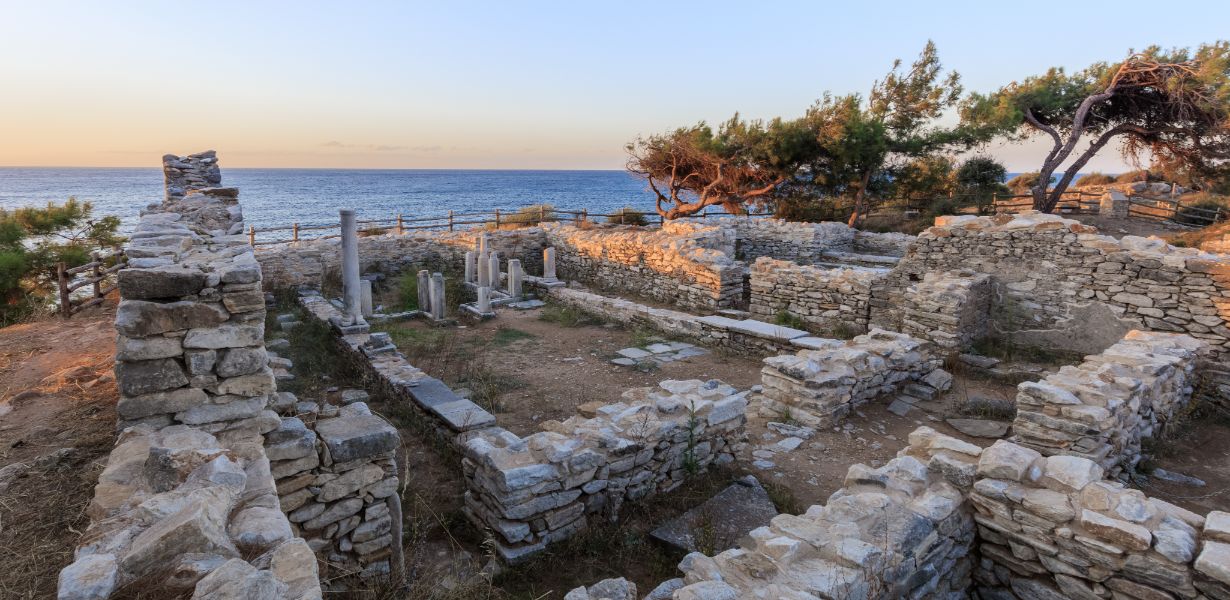
In the realm of historical exploration and wonder, virtual time travel is rapidly changing the way we connect with our past. In this blog, we embark on an exhilarating journey through the sands of time, exploring archaeological sites like never before. Our time machine? The digital world. Join us as we unravel the secrets of ancient civilizations and dive into the rich history that lies beneath our feet.
The Allure of Archaeological Sites
Archaeological sites are windows to the past, offering us invaluable glimpses into the lives of our ancestors. These sites, ranging from the pyramids of Egypt to the lost city of Machu Picchu, hold stories waiting to be told. Each stone, artifact, and inscription is a piece of the puzzle that is human history. These sites have always fascinated historians and adventurers, but not everyone can travel to these far-flung locations. That's where virtual time travel comes in, making these experiences accessible to anyone with an internet connection.
The Digital Time Machine
Virtual time travel is made possible through a variety of digital technologies, from 3D modeling and virtual reality to interactive websites and immersive apps. It allows us to step into the shoes of ancient civilizations, walk their streets, and witness their daily lives.
3D Modeling: Using high-quality 3D models, archaeologists and digital artists reconstruct ancient cities, buildings, and artifacts with meticulous detail.
Virtual Reality: VR headsets transport us to different eras, enabling us to explore ancient worlds in a truly immersive way.
Interactive Websites: Many archaeological sites now offer interactive websites that provide a virtual tour, complete with detailed descriptions and historical context.
Exploring Archaeological Sites from Home
Imagine sitting in your living room and embarking on a virtual journey to the grandeur of the Great Wall of China or the enigmatic Stonehenge. With just a few clicks, you can delve into the mysteries of these archaeological wonders.
The benefits of virtual time travel are numerous:
Accessibility: It allows people of all abilities and backgrounds to explore these sites, including those who might never have the chance to travel in person.
Education: Virtual time travel offers a dynamic way to teach history. It engages students and sparks their curiosity, making the past come alive in the classroom.
Preservation: By reducing physical foot traffic, it aids in the preservation of delicate archaeological sites.
Immersive Experiences
One of the most exciting aspects of virtual time travel is the level of immersion it provides. With a VR headset, you can walk the streets of Pompeii just before the eruption of Mount Vesuvius, or explore the chambers of the Great Pyramid. It's an experience that transcends traditional history books and documentaries.
Archaeological Site Highlights
Let's take a moment to highlight some of the remarkable archaeological sites you can virtually visit:
Machu Picchu: The Lost City of the Incas
Machu Picchu, perched high in the Andes, is a testament to the engineering and architectural prowess of the Inca civilization. You can now wander its terraces and temples from your own home.
Petra: The Rose City
The ancient city of Petra in Jordan, known for its intricate rock-cut architecture, is a UNESCO World Heritage Site. Virtual tours bring you closer to its breathtaking beauty.
Giza Pyramids: Mysteries of Egypt
The Giza Pyramids have fascinated the world for centuries. Virtual time travel lets you explore these ancient marvels and even venture inside the pyramids themselves.
Unearthing Lost Civilizations
Virtual time travel is not just about visiting famous sites. It's also a tool for uncovering forgotten civilizations. Archaeologists are using these technologies to discover lost cities in dense jungles or buried beneath layers of earth.
Final Words
Virtual time travel has opened up a new dimension in the way we explore our history. It's a powerful tool that lets us witness the rise and fall of civilizations, understand their customs and technologies, and appreciate the achievements of our ancestors. As we journey through these archaeological sites, we not only connect with the past but also gain a deeper appreciation for the present.
Commonly Asked Questions
Q1: How accurate are virtual reconstructions of archaeological sites?
A1: Virtual reconstructions strive for accuracy, often relying on archaeological evidence and research. While some details may be speculative, they provide a close representation of ancient sites.
Q2: What equipment do I need for virtual time travel?
A2: The basic requirement is a computer or smartphone with internet access. For a more immersive experience, a VR headset is recommended.
Q3: Can I interact with virtual archaeological sites?
A3: Some virtual experiences allow limited interaction, such as moving through the environment, zooming in on details, and reading descriptions.
Q4: Are virtual tours of archaeological sites free?
A4: Many virtual tours are free, especially those offered by educational and cultural institutions. However, some may require a small fee for premium experiences.
Q5: How can I support the preservation of archaeological sites while enjoying virtual time travel?
A5: Consider making a donation to organizations that work to preserve and protect these sites. Your support helps ensure they remain accessible for future generations.





